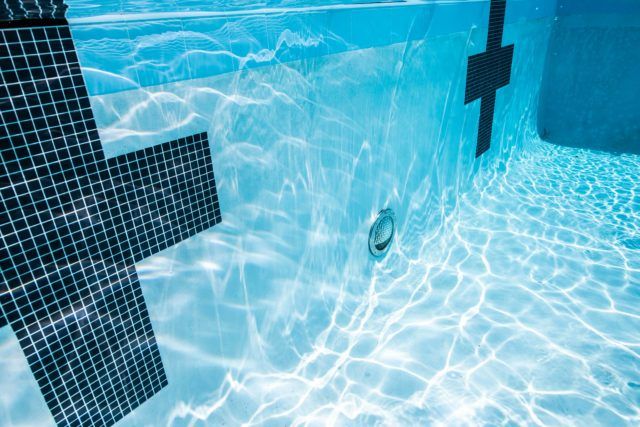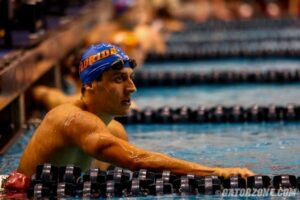By SwimSwam Contributors on SwimSwam

Courtesy: Carlos Omana
As a high school and collegiate swimmer, I always lifted after practice because the idea was that we did not want to be fatigued before practice. Now, as a strength and conditioning coach, I know that this idea can be flawed.
Yes, the priority is and always will be, to swim fast. However, if done correctly, lifting before practice can actually help swimmers have a better practice and overall season. Let’s dive in.
First off, swimmers rarely, if at all, should be maxing out for 1 rep on any lift. That does not mean, however, that swimmers can’t be strong. With that being said, weight room sessions should always be intended to improve a swimmer’s capability to swim fast. It should be designed in conjunction with what the swim coach has planned so that the two stimuli collaborate with each other. Here are two ways lifting before practice can be beneficial:
Micro-dosing: What rule exists that lifting sessions have to be at least an hour long and as heavy as possible? What if instead of lifting 2-3 times a week, we extend those over four, five, or even 6sixdays? We can spread out the exercises and volume so that the swimmers train for maybe 20-30 mins before practice.
Benefits of micro-dosing include:
The lift can be used as a warm-up before practice, improving position, increasing body temperature, and addressing weaknesses.
Allows swimmers to be more lenient as to when they can lift. If a swimmer schedules lifts three times a week and misses one lift, they miss 33% of training. If they are lifting six times a week and they miss one, they only miss around 16%.
Training more often accelerates the swimmer’s skill set with movements in the gym, allowing them to get more out of their gym sessions and improve their strength capabilities. If a swimmer trains a split squat more often, for example, then they will be more proficient and skilled at it and can produce higher outputs.
Undulating Fatigue and Recovery: Throughout each week, there are usually (and should be) high and low-intensity days/practices. Communication between the swim coach and strength coach is crucial to ensure both stimuli complement each other. A common mistake is using low-intensity practice days as an opportunity to complete a higher-intensity lift since the swimmer is more “fresh”. While this may be true, instead of undulating your high and low days to optimize performance and recovery, every day is high now, hindering recovery capabilities.
That being said, a way to optimize practice and recovery capabilities is to match both training stimuli. If the swim coach has a high-intensity speed practice planned, the lift before practice can be dynamic or explosive to excite the nervous system leading into practice. If the swim coach has a distance or volume practice planned, the lift can be lower intensity, higher volume to promote blood flow and prepare the swimmer for the anticipated demands.
In the world of strength and conditioning, when a battery of tests are completed, testing always occurs from least fatiguing to most fatiguing. This limits the amount that one test affects the next, allowing for optimal results. For example, testing a one-mile run before testing a vertical jump would not be ideal. The swimming world is no different. This can apply to the idea of lifting before practice. Again, the lift should not be more fatiguing than practice and should be used as a way of improving practice. If swimmers arrive at practice fatigued from the weight room, there needs to be a re-evaluation of the program and fatigue management.
 ABOUT CARLOS OMANA
ABOUT CARLOS OMANA
Carlos Omana, owner of White Water Method, trained under Coach Kirk Peppas and at the University of Florida during his swimming career in addition to representing Venezuela internationally after his collegiate career. After swimming, Carlos pursued a career in strength and conditioning. He graduated with his M.S. in Human Performance and received certifications as a Certified Strength and Conditioning Specialist, USAW Level 1 Performance Coach, Performance Enhancement Specialist, and Certified Physical Preparation Specialist. In 2024, he started White Water Method which aims to help swimmers and coaches tackle physiological obstacles such as joint discomfort, technique issues, strength, power, mobility, etc. White Water Method is reinventing and improving the old school dryland training that swimmers know all too well.
Read the full story on SwimSwam: White Water Method: Benefits of Lifting Before Practice
No comments:
Post a Comment